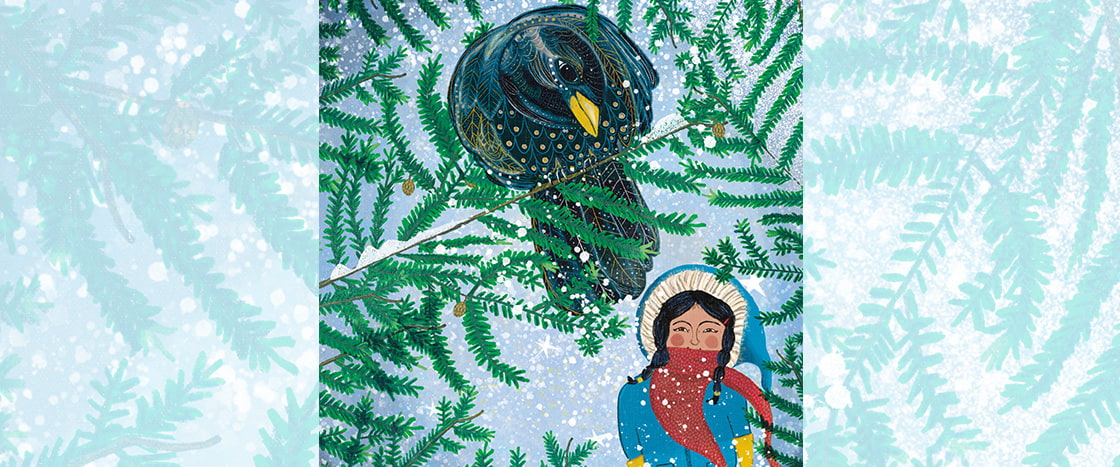The way a crow
Shook down on me
The dust of snow
From a hemlock tree
Has given my heart
A change of mood
And saved some part
Of a day I had rued.

A wintry poem from Robert Frost
Learning Objective: Students will analyze the rhyming words in this Robert Frost poem about the soothing power of nature.
Table of Contents
SEL Focus, Discussion Questions
1. Preparing to Read
2. Reading the Poem
3. Discussing the Poem
4. Skill Building
Distribute or assign the Poetry Kit, which will take students on a deep dive into the poem and offer opportunities for students to connect the poem to other stories in the issue, as well as write their own short rhyming poem.
Read Robert Frost’s poem “Dust of Snow” alongside Sarah McCarry’s fiction story “The Perfects.” (Find both in our December 2023/January 2024 issue!) Point out that an unexpected event helps change the mood in both the poem and the fiction. Discuss how the theme of each feature is similar and different. “Dust of Snow” also pairs well with our February 2021 poem, “My Inner Weather Report.”
Reading Rockets has some fun rhyming activities for elementary students, including creating a rhyming dictionary.
The New York Times has an excellent mindfulness guide for kids of all ages. Try out some of the exercises they suggest with your students, such as listening to “Mindful Breathing” together or doing the “Seeing Clearly” activity.
Your students might enjoy hearing Robert Frost read “Dust of Snow.” You can listen to the 35-second video here. Learn about the poet’s life at Britannica Kids. (Note: Video starts after a short ad.)